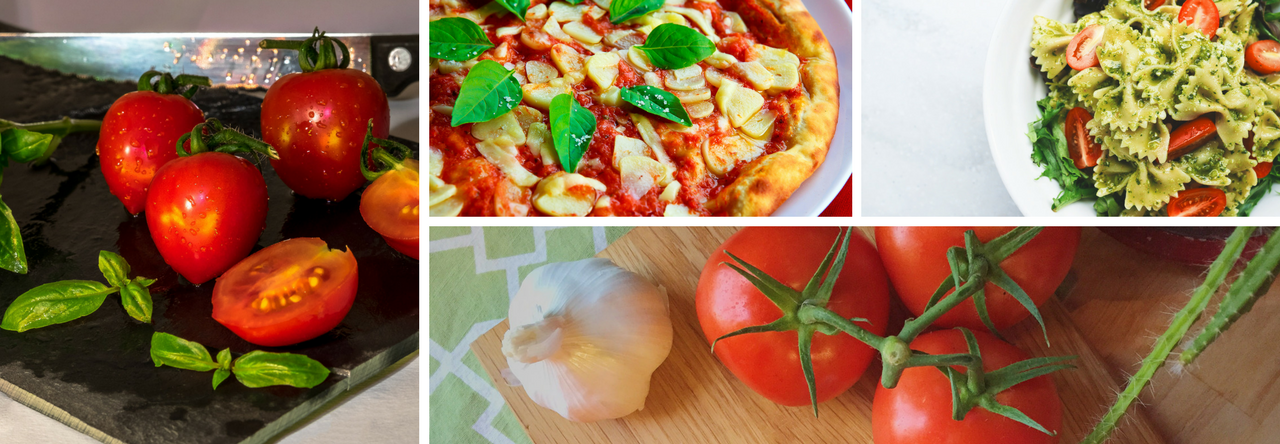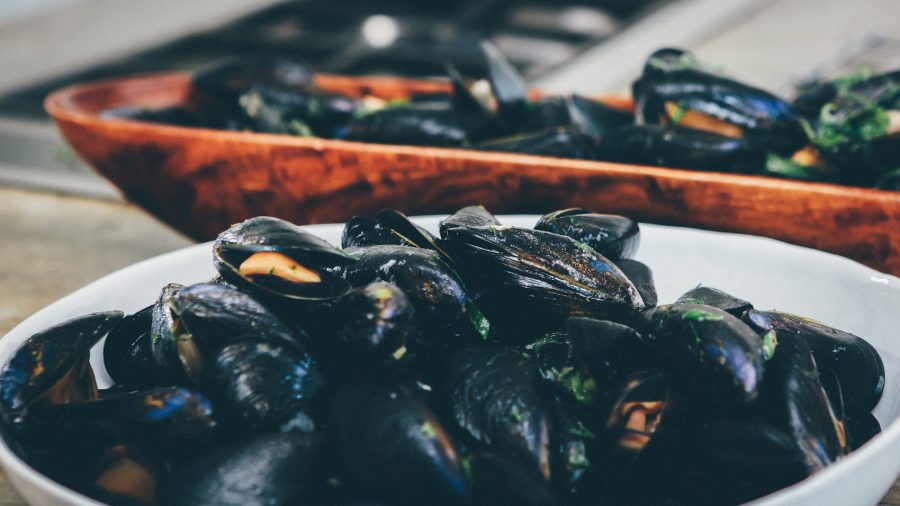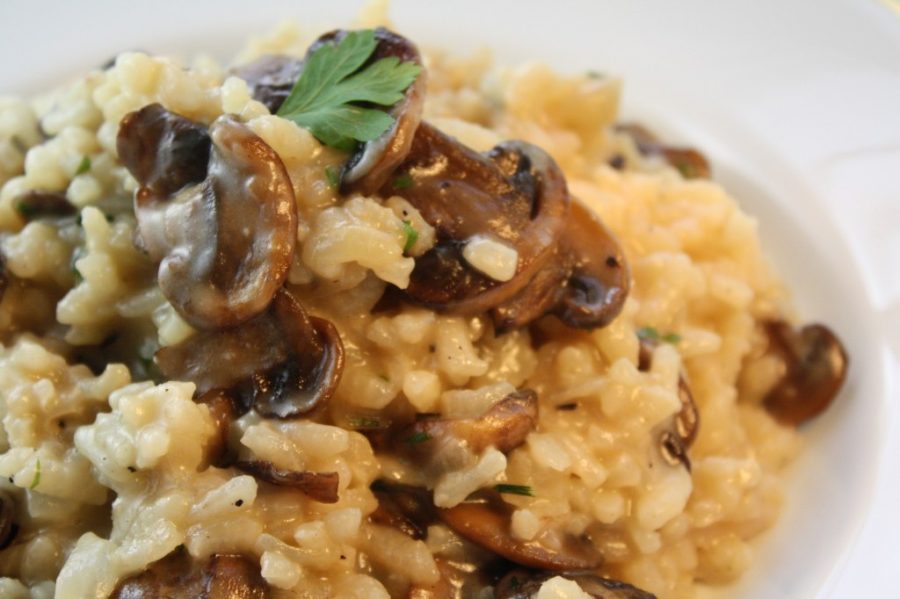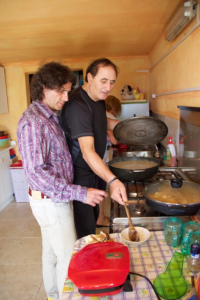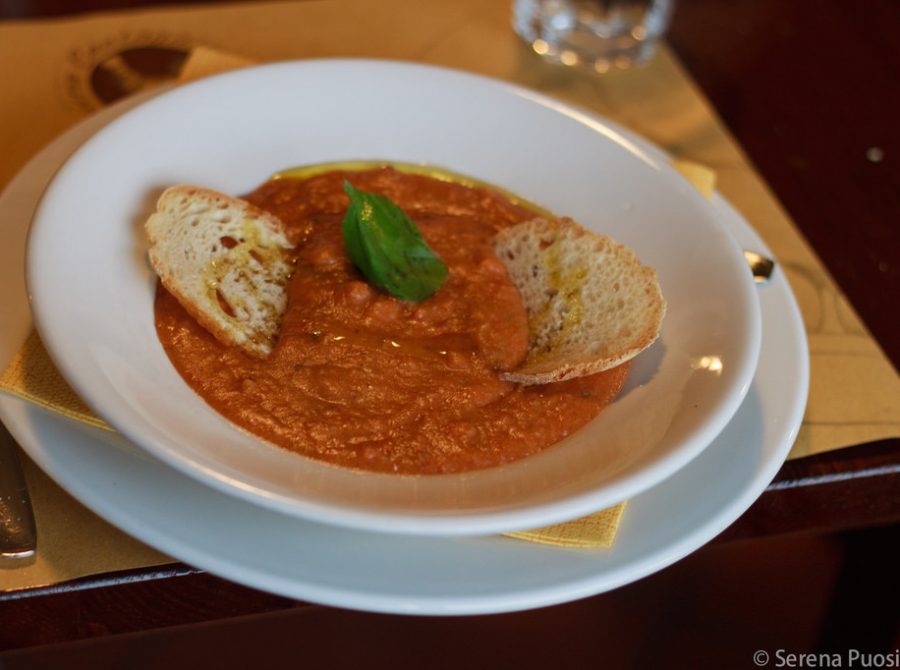This recipe features fresh mussels as the basis. You can either serve the mussels in their juices with fresh bread, make a risotto alla marina, or you can use the mussels in their juices as a pasta sauce for spaghetti.
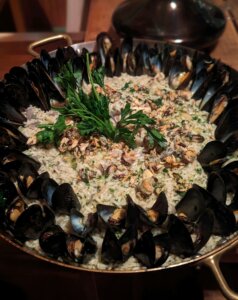
A beautiful presentation of risotto with mussels, with a parsley garnish. Photo by our friend Diana Baehrend.
Ingredients
About 3 pounds of mussels– Make sure the mussels are fresh and healthy by checking to see if their shells are close to slightly opened before purchasing. Keep them in the fridge until you are ready to cook them.
- ½ cup of virgin olive oil
- 1 bunch of Italian parsley (flat-leaf parsley) – finely minced
- 3 cloves of garlic, peeled and smashed into large chunks
- 1½ cups of white wine, preferably an Italian pinot grigio
- Salt and pepper to taste
Preparation
- Heat the olive oil on high heat in a large saucepan that has a lid. When it is hot, add the garlic cloves and allow them to become golden in color.
- Remove the garlic from the skillet as soon as it becomes golden (do not wait until the garlic gets brown).
- Add one handful of the minced parsley (reserving the rest until you serve the mussels) and all of the mussels to the pan and cover immediately. Using oven mitts, shake the pan on the flame to mix up the mussels (but don’t open the cover, because you want the mussels to steam).
- Wait about 2 minutes for the mussels to open: add the wine and cover again for 1 minute.
- Remove the cover and continue to cook on high heat for about 1 minute to let alcohol evaporate
- Turn off the flame and add freshly ground black pepper—a lot of it!—and the remainder of the minced parsley.
- Mix and serve immediately as a soup, along with slices of fresh bread you and your guests can use to sop up the delicious broth created by steaming the mussels in wine and oil.
- Buon appetito!
Notes
Mussels can be stored in the fridge in a pot covered with a wet cloth for about 1-2 days, but make sure to remove any plastic bag around them so that they can breathe. Clean the mussels—if necessary—using a knife and your thumb to remove the thread.
Suggested Wine Pairing
Serve with a white wine such as an Arneis no more than a year old. If you prefer, you can serve it witha more crisp and less fruity wine like a Gavi, also only a year old.
Italiano: Pepata di Cozze
Ingredienti
- Circa 1,5 kg di cozze – Assicurati che le cozze siano fresche e sane controllando che i loro gusci siano leggermente aperti prima dell’acquisto. Tienili ben freddi finché non sei pronto per cucinarli.
- Circa 125v ml di olio d’oliva extravergine
- 1 mazzetto di prezzemolo italiano (prezzemolo a foglia piatta) – tritato finemente
- 3 spicchi d’aglio, schiacciati
- 1 bicchiere vino bianco,
- Sale e pepe a piacere
Nota: Le cozze possono essere conservate in frigorifero in una pentola coperta con un panno umido per circa 1-2 giorni, ma rimuovete eventuali buste di plastica intorno a loro in modo che possano respirare. Pulite le cozze, se necessario, utilizzando un coltello e il pollice per rimuovere il filo.
Preparazione
- Scaldare l’olio d’oliva a fuoco vivo in una grande casseruola con coperchio. Quando sarà ben caldo unite gli spicchi d’aglio. e lasciate che diventino dorati. Rimuovere l’aglio dalla padella non appena diventa dorato (non aspettare che l’aglio diventi marrone).
- Aggiungete una manciata di prezzemolo tritato (riservando il resto fino a quando non servite le cozze) e tutte le cozze nella padella e coprire immediatamente. Usando guanti da forno, scuotete la teglia sul fuoco per amalgamare le cozze (ma non aprite il coperchio, perché volete che le cozze cuociano a vapore).
- Attendere circa 2 minuti affinché le cozze si aprano; aggiungere il vino e coprire ancora per 1 minuto.
- Togliere il coperchio e continuare a cuocere a fuoco vivace per circa 1 minuto lasciare evaporare 1 minuto
- Spegnete il fuoco e aggiungete pepe nero macinato fresco – molto! – e il resto del prezzemolo tritato.
- Mescola e servi subito come zuppa, insieme a fette di pane fresco che potrete utilizzare per intingere nel delizioso brodo creato cuocendo le cozze.
- Buon appetito!
Abbinamento Vini Consigliato: Servire con un vino bianco tipo “Arneis” di non più di un anno. Se preferite, potete servirlo con un vino più fresco e meno fruttato come un Gavi, anche di appena un anno.

